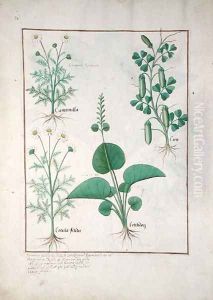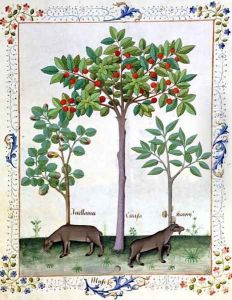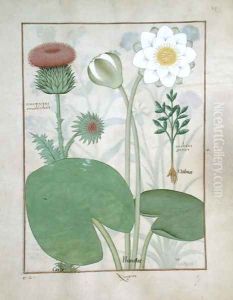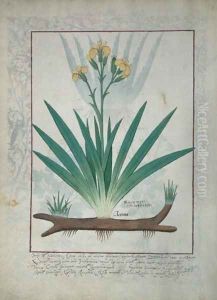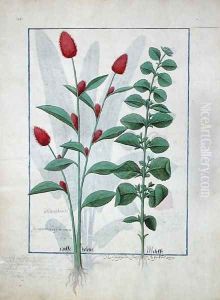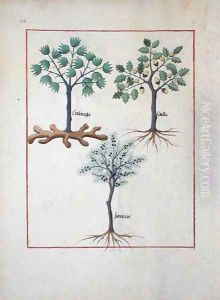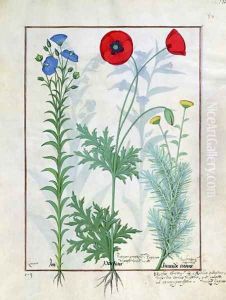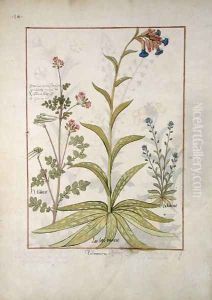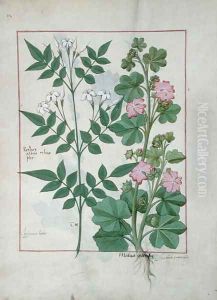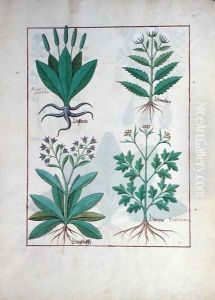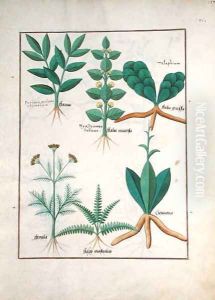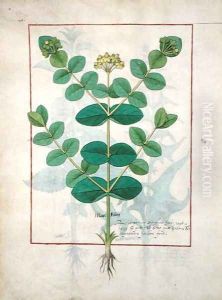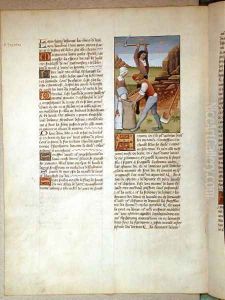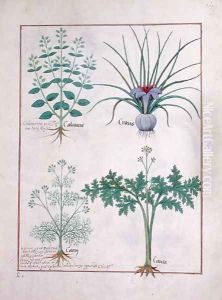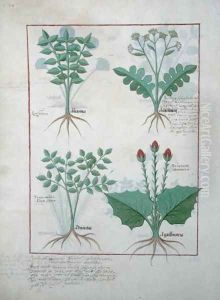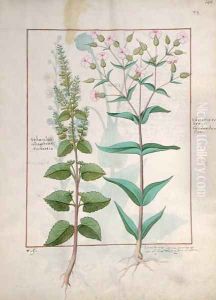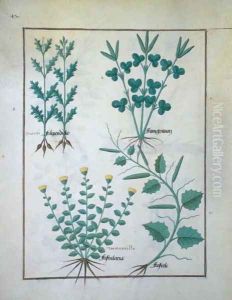





Top row- Filipendula. Bottom row- Fistularia and Faseolus, illustration from The Book of Simple Medicines, by Mattheaus Platearius d.c.1161 c.1470
-
About Reproduction
Discover the allure of art with our faithful reproduction of "Top row- Filipendula. Bottom row- Fistularia and Faseolus, illustration from The Book of Simple Medicines, by Mattheaus Platearius d.c.1161 c.1470", originally brought to life by the talented Robinet Testard. Unlike posters or prints, our hand-painted oil painting breathes an unique sense of depth and texture into your space. Every detail, every stroke, and every texture is meticulously recreated, paying the perfect homage to Robinet Testard and his artistic vision.
Owning this piece is more than just decoration - it's a statement of your refined taste in art. Let the vibrant colors and intricate details of this replica serve as a daily reminder of the beauty in our world. Elevate your decor and appreciate the richness of art with our replica of this masterpiece.
-
Painting Description
The illustration titled "Top row- Filipendula. Bottom row- Fistularia and Faseolus" is a notable work from "The Book of Simple Medicines," a medieval herbal compendium originally authored by Mattheaus Platearius, who passed away around 1161. This particular illustration, created circa 1470, is attributed to the French illuminator Robinet Testard. Testard was active during the late 15th century and is known for his detailed and vibrant manuscript illuminations.
"The Book of Simple Medicines," also known as "Circa Instans," is a significant text in the history of medicine and botany. It was widely circulated in medieval Europe and served as a crucial reference for the identification and use of medicinal plants. The work is a testament to the medieval understanding of herbal medicine, combining practical medical knowledge with the artistic traditions of manuscript illumination.
In this illustration, the top row features Filipendula, a genus of flowering plants in the family Rosaceae, commonly known for species such as meadowsweet. Filipendula has been historically valued for its medicinal properties, particularly in treating ailments such as fevers and inflammation.
The bottom row of the illustration showcases Fistularia and Faseolus. Fistularia, although less commonly referenced in modern botanical texts, likely refers to a plant known for its tubular structures, possibly used in traditional remedies. Faseolus, on the other hand, refers to the genus Phaseolus, which includes beans such as the common bean (Phaseolus vulgaris). Beans have been a staple in human diets for millennia and possess various health benefits, including being a source of protein and fiber.
Robinet Testard's work on this manuscript is characterized by meticulous attention to detail and vibrant coloration, which not only served an educational purpose but also made the text visually appealing. His illustrations helped bridge the gap between scientific knowledge and artistic expression, making complex information more accessible to readers of the time.
This illustration from "The Book of Simple Medicines" exemplifies the rich tradition of medieval herbal manuscripts, where art and science intersected to preserve and disseminate knowledge about the natural world and its medicinal potential.
-
Lead Time & Shipping
When you order this oil painting replica, it typically takes 2-3 weeks to paint. If the artwork is more complex, it might need a little more time to ensure the best quality. Once it's ready, we'll send you a photo for your approval. After you give the green light, we'll ship it to you for free.
-
Return & Refund
We believe in the quality of our hand-painted oil painting reproductions, and your satisfaction is our priority. If for any reason, you are not completely satisfied with your purchase, we offer a 45-day return policy. You can return your artwork within 45 days of receipt and receive a full refund. Please note that the artwork must be returned in the original packaging and in the same condition as it was received.





